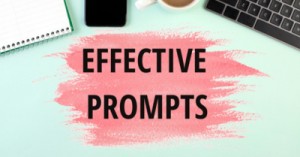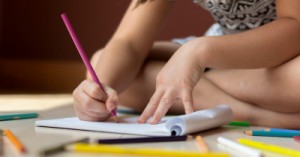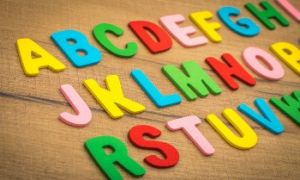Experiences in early childhood settings build on the range of experiences with language, literacy and numeracy that children have within their families and communities. The following article provides activities to promote each of the sub-outcomes of EYLF Outcome 5 - Children Are Effective Communicators.
Activities To Promote EYLF Learning Outcome 5
5.1 Children interact verbally and non-verbally with others for a range of purposes
One of the most meaningful ways that educators can meet this Learning Outcome is by valuing children’s linguistic heritage while encouraging the use of and acquisition of home languages and Standard Australian English.
For example, when introducing Australian character animals, look for ways you can encourage children to name their favourite animal toys or dolls in their home language. Additionally, you can plan for children to take the animals home for a ‘sleepover’, thereby building a deeper connection between home and the centre. If there are Aboriginal or Torres Strait Islander children, encourage the whole class to find out the indigenous names of such animals and then have them make picture cards with names in both the indigenous language and English. Later such cards can be used in songs and rhymes, in hiding and seek games, in turn-taking games or in matching games.
Educators can implement this Learning Outcome by modelling language and encouraging children to express themselves through language in a range of contexts and for a range of purposes. So, for instance, when teaching empathy, it is good practice to notice and appreciate kindness and sharing in children rather than academic achievement or examples of physical strength. This way your young learners know how to recognise as well as model empathy with language. However, if a child speaks or acts insensitively, extend a do-over opportunity, rather than a punishment. Helping a child realise that they have hurt someone and then allowing them to make amends is a powerful way to model empathy in words and action. At the other end of the spectrum, teach children assertive but non-blaming language when they might need to face up to a bully, like “leave me alone” or “back off”.
Yet another way that this Learning Outcome can be met is by including real-life resources to promote children’s use of mathematical language. Educators can support children’s communication of thinking about quantities by teaching them the language to describe attributes of objects and collections. For example, as children collect leaves, pebbles, shells and twigs from their nature walk, educators can help them compare objects with words like bigger, heavier, longer, less, more and so on. Such terms not only build their mathematical language but also strengthen their numeracy skills as they practise sorting and ordering items into similar and different groups.
5.2 Children engage with a range of texts and gain meaning from these texts
Educators can meet this Learning Outcome by reading and sharing a range of books and other texts with children. Incorporate fiction, rhymes, non-fiction, and magazines into reading materials besides representing characters and settings from various countries and continents. Read aloud stories with enough pauses to ask questions or invite opinions. Crack a joke or recall an anecdote to make it a fun activity. Look for ways you can relate a character or set to the real lives of your young listeners. Once they get comfortable with books, incorporate simple reading exercises which could range from repeating after you to taking turns to read from the same book for older kids.
Among the most enjoyable ways that educators can implement this Learning, Outcome is by singing and chanting rhymes, jingles and songs. Introduce games that involve marking beats by clapping hands or stamping feet. These are fun ways to practice words and build specific vocabulary like related to weather, animals, emotions and how to greet people. Additionally, rhymes and songs can be used to foster rudimentary literacy skills like phonemic awareness by helping children note subtle differences between the sounds of two phonemes. Best of all, songs and rhymes provide ample opportunity to get children moving and dancing which again make for powerful modes of non-verbal communication.
Providing a literacy-enriched environment including display print in home languages and Standard Australian English is another way to meet this Learning Outcome. Educators can look for environmental print found in the child’s social and physical environment as well as those used for daily functioning to enhance their print awareness and practise emergent reading. Attractive objects like a candy wrapper or a favourite cereal box make for great recognition activities. Ask children if they can find the first letter of their name somewhere on the box; then extend it by having them look for other letters from their names. To enhance children’s functional print awareness, label all the meaningful areas in the classroom, ranging from learning centres and play areas to shoe racks and the internet corner.
5.3 Children express ideas and make meaning using a range of media
No one makes meaning in a vacuum and for children’s efforts at making meaning to be truly relevant, educators can build on children’s family and community experiences with creative and expressive arts. Try and involve families of different cultural backgrounds in everyday learning and care practices. Encourage them to volunteer for storytelling, music, dance or craft sessions with children. Such activities will help children use varied textual forms to express as much of their cultural heritage – for example, Dreaming Stories – as their lived experiences like their continuing connections with and reverence for the land.
Using varied texts to make meaning not only requires educators to inspire children’s imagination but also to teach them the skills and techniques that will enhance their capacity for self-expression and communication. For example, educators can show children how to mix colours and clean brushes. Better still they can use an exploratory approach to teach children such skills, like finding out what colour emerges after mixing two or three or how drawing from underneath a table can result in a whole new visual perspective. Also be inspired by the styles and techniques of famous artists, so that children can have fun with the polka dots and circles like Yayoi Kusama or flicking and splattering paint in the manner of Jackson Pollock.
In order to meaningfully implement this Learning Objective, it is important for educators to be fully engaged when children are using varied media to make meaning. For example, look for opportunities when you can join in children’s play and co-construct materials such as signs that extend the play and enhance literacy learning.
5.4 Children begin to understand how symbols and pattern systems work
One of the most relevant symbolic systems is time and educators can implement this Learning Outcome by helping children identify and predict the patterns of regular routines and the passing of time. You can do this by teaching children to count the days of the week, the time on the clock, and the number of sleeps until a birthday. Eventually extend the learning to help them predict routines and their sequences like packing away art materials, washing hands, setting the table for snack time and so on.
Yet another way educators can meet this Learning Outcome is by providing children with access to a wide range of everyday materials that they can use to create patterns and to sort, categorise, order and compare. For example, encourage children to make marks in various ways—in the sand, on paper, in chalk and on concrete. This can be used to teach them that signs and symbols communicate meaning. Gradually their drawing and scribbling lead to writing and in the process, children learn that writing is a particular kind of symbol system that carries a message from one place and one person to another.
5.5 Children use information and communication technologies to access information, investigate ideas and represent their thinking
Educators can meet this Learning Outcome by integrating technologies into children’s play experiences and projects. For example, they can encourage children to use digital technology as resources like keeping time with a digital watch or smartphone in running races or obstacle courses, accessing apps for physical activity games, downloading music for singing and dancing, or re-enacting their favoured popular-culture characters from digital media.
Among the most meaningful ways of integrating digital technology as a learning aid for young children is to encourage collaborative learning about and through technologies between children, children and educators. Make opportunities for children to use the internet as a resource in group projects or create spaces around the computer where they can sit and watch videos together. Eventually facilitate the translation of such digital experiences as viewing a cartoon film to non-digital activities through painting, crafts and music. Such give and take of digital and non-digital experiences help build further opportunities for language development, and social and emotional learning.
Further Reading:
The following article provides activities to promote each of the sub-outcomes of EYLF Outcome 1: Children Have A Strong Sense Of Identity: Activity Ideas To Promote EYLF Outcome 1
The following article provides activities to promote each of the sub-outcomes of EYLF Outcome 2: Children Are Connected With And Contribute To Their World: Activity Ideas To Promote EYLF Outcome 2
The following article provides activities to promote each of the sub-outcomes of EYLF Outcome 3: Children Have A Strong Sense of Wellbeing: Activity Ideas To Promote EYLF Outcome 3
The following article provides activities to promote each of the sub-outcomes of EYLF Outcome 4: Children Are Confident And Involved Learners: Activity Ideas To Promote EYLF Outcome 4
The EYLF is a guide that consists of Principles, Practices and 5 main Learning Outcomes along with each of their sub-outcomes, based on identity, community, wellbeing, learning and communication. For more information: Understanding EYLF
Within the Early Years Learning Framework, there are three basic concepts that children’s lives are characterized by. Belonging, Being and Becoming. For more information, please read the following: Belonging, Being & Becoming Concepts Of The EYLF
The EYLF Learning Outcomes are goals that can be achieved by a child during their learning. The outcomes and sub-outcomes cover a variety of areas which include identity, community, wellbeing, learning and communication. For more information, please read the following: EYLF Learning Outcomes
The following article provides information on each of the 5 Principles and examples of strategies of how to implement the eylf principles into your service. For more information, please read the following: EYLF Principles And Strategies To Implement Them
The following article provides information on each of the 8 Practices and examples of how to implement the eylf practices into your service. For more information: EYLF Practices And Strategies To Implement Them
A guide for educators on what to observe under each sub-learning outcome from the EYLF Framework, when a child is engaged in play and learning. For more information, please read the following: How Children Can Achieve EYLF Learning Outcomes
To support children achieve learning outcomes from the EYLF Framework, the following list gives educators examples of how to help children with their goals. For more information, please read the following: How Educators Can Promote EYLF Learning Outcomes
References:
- Belonging, Being and Becoming EYLF For Australia, ACECQA
- Educators' Guide To The EYLF, ACECQA







 Here is the list of the EYLF Learning Outcomes that you can use as a guide or reference for your documentation and planning. The EYLF
Here is the list of the EYLF Learning Outcomes that you can use as a guide or reference for your documentation and planning. The EYLF The EYLF is a guide which consists of Principles, Practices and 5 main Learning Outcomes along with each of their sub outcomes, based on identity,
The EYLF is a guide which consists of Principles, Practices and 5 main Learning Outcomes along with each of their sub outcomes, based on identity, This is a guide on How to Write a Learning Story. It provides information on What Is A Learning Story, Writing A Learning Story, Sample
This is a guide on How to Write a Learning Story. It provides information on What Is A Learning Story, Writing A Learning Story, Sample One of the most important types of documentation methods that educators needs to be familiar with are “observations”. Observations are crucial for all early childhood
One of the most important types of documentation methods that educators needs to be familiar with are “observations”. Observations are crucial for all early childhood To support children achieve learning outcomes from the EYLF Framework, the following list gives educators examples of how to promote children's learning in each individual
To support children achieve learning outcomes from the EYLF Framework, the following list gives educators examples of how to promote children's learning in each individual Reflective practice is learning from everyday situations and issues and concerns that arise which form part of our daily routine while working in an early
Reflective practice is learning from everyday situations and issues and concerns that arise which form part of our daily routine while working in an early Within Australia, Programming and Planning is reflected and supported by the Early Years Learning Framework. Educators within early childhood settings, use the EYLF to guide
Within Australia, Programming and Planning is reflected and supported by the Early Years Learning Framework. Educators within early childhood settings, use the EYLF to guide When observing children, it's important that we use a range of different observation methods from running records, learning stories to photographs and work samples. Using
When observing children, it's important that we use a range of different observation methods from running records, learning stories to photographs and work samples. Using This is a guide for educators on what to observe under each sub learning outcome from the EYLF Framework, when a child is engaged in
This is a guide for educators on what to observe under each sub learning outcome from the EYLF Framework, when a child is engaged in The Early Years Learning Framework describes the curriculum as “all the interactions, experiences, activities, routines and events, planned and unplanned, that occur in an environment
The Early Years Learning Framework describes the curriculum as “all the interactions, experiences, activities, routines and events, planned and unplanned, that occur in an environment


